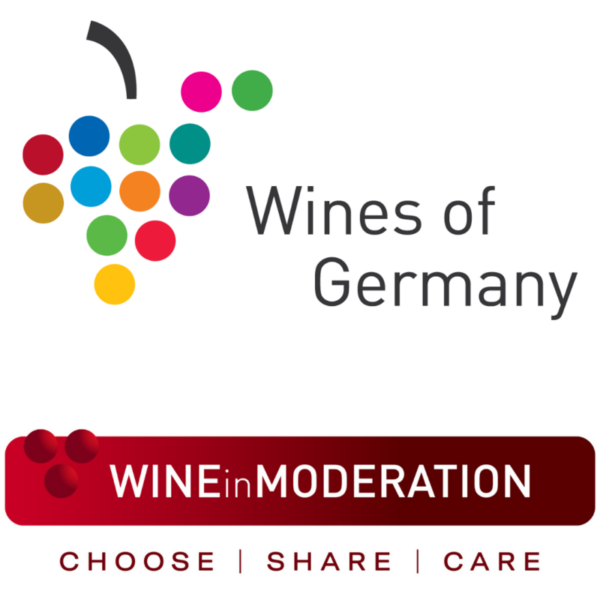Every month, ‘Whose Wine is it Anyway?’ profiles a German winemaker to give you a behind-the-vines look at the world of German wine. This month, we’re highlighting Patrick Möllendorf of the Villa Wolf estate. Based in the Pfalz, Villa Wolf captures the many authentic expressions of the Pfalz’s diverse offerings and terroirs in its wines.
Whose *Wine* is it Anyway? Meet Patrick Möllendorf
Meet Patrick Möllendorf
Producer: Villa Wolf
Region: Pfalz
Village: Wachenheim
Focus: Riesling, Pinot Blanc, Pinot Gris, Pinot Noir, Gewürztraminer, Dornfelder
U.S. Importer: Loosen Bros. USA
Background
Patrick Möllendorf’s passion for winemaking began just like many great winemakers: with a great glass of wine. Born and raised on his family’s horse farm near Berlin, Möllendorf developed a strong connection to nature early on. As a child, he spent his summers learning how to cultivate his own garden with his grandfather. But his true interest in viticulture was ignited by his first glass of wine while on vacation in the Mosel.
Influenced by the region’s rich landscape and wine culture, Möllendorf moved to the Mosel at just 17 years old to begin his formal training as a winemaker. He submitted a single application to his dream apprenticeship at Dr. Loosen’s Villa Wolf estate in the Pfalz and joined the winery in 2008.
During his apprenticeship, Möllendorf assisted Cellar Master Berni Schug, learning the intricacies of Pinot varieties grown at Villa Wolf. The estate, originally established in 1756 as JL Wolf, was reinvented in 1996 by Ernst Loosen, who leveraged the Pfalz region’s unique terroir to produce first-class dry wines to complement Dr. Loosen’s Mosel Rieslings.
Möllendorf continues to work at Villa Wolf to this day, now as the winery’s Operations Manager, where he is responsible for vineyard cultivation, wine development, sales, and is rarely seen without a vineyard dog by his side, from Muecke the Great Dane to Ayla the German Wirehaired Pointer.
Vineyards
Villa Wolf’s vineyards are located in the sunny Pfalz region, where the diverse terroir is influenced by old vines and mineral-rich soils consisting of limestone, basalt, and sandstone.
The winery’s vineyards have been cultivated organically since 2014. Grapes are grown without artificial fertilizers, herbicides, or pesticides. Responsible for the vineyards, Möllendorf ensures that Villa Wolf’s single-vineyard wines use only the top grapes, which are hand-picked and carefully processed. The winery replenishes the soil each year by preparing specially produced compost that keep Villa Wolf’s vineyards vital and resilient.
A good wine grows in the vineyard and arises in the head, and the necessary patience grows with the experience of many years.
— Patrick Möllendorf
Wines
Villa Wolf is committed to producing wines that capture the authentic terroir of the Pfalz and in the region’s classic style. Each wine is characterized by a delicate minerality, moderate in alcohol, easy drinking but able to age. Villa Wolf Rieslings are all vinified dry and, given the climate, are more full-bodied than those from Germany’s cooler regions.
Aside from Riesling, Villa Wolf produces a number of classic Pfalz varietals, including Pinot Blanc, Pinot Gris, Pinot Noir, Gewürztraminer, and Dornfelder. Villa Wolf relies on minimalist winemaking and traditional vinification methods for every grape variety, fermenting and aging the high-quality fruit in large, neutral oak casks. Wines are then aged on the lees to produce the most stylistically authentic wines as possible.
Möllendorf recommends the Villa Wolf’s Pinot Noir Rosé, Pinot Gris and Pinot Blanc for an introduction into the winery. If interested in Riesling, look to Villa Wolf’s more mature Rieslings, which reach their full potential after at least three or four years of aging.
The Influence of Bavaria and Burgundy
Villa Wolf’s individuality is reflected in more than just taste. Unlike many wineries in the Pfalz, Villa Wolf follows the vineyard classification of the Royal Bavarian Government of 1828. The Pfalz region was under Bavarian rule at this time, and Villa Wolf continues to use this classification system to this day.
With a climate that favors Burgundian grape varieties, Villa Wolf also follows the Burgundian naming system. This means only the producer, vintage, vineyard location and grape variety are featured on the front label, while all legal information is found on the back label. Villa Wolf’s wines stand out from the crowd, and with them Möllendorf hopes to inspire the next wave of German winemakers.
Explore more
Visit Villa Wolf’s website
Stay tuned for next month’s winemaker spotlight! Follow us on Instagram, Twitter, and Facebook at @GermanWineUSA and subscribe to our newsletter to stay up to date on all things German Wine in the U.S.
